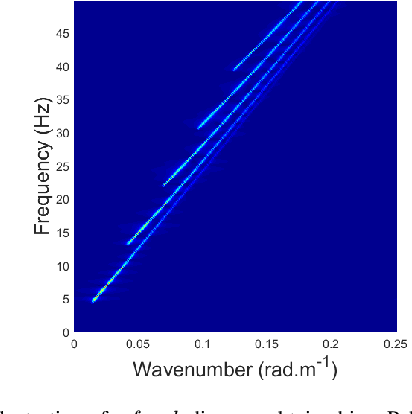Clément Dorffer
Generalization performance of neural mapping schemes for the space-time interpolation of satellite-derived ocean colour datasets
Mar 14, 2025Abstract:Neural mapping schemes have become appealing approaches to deliver gap-free satellite-derived products for sea surface tracers. The generalization performance of these learning-based approaches naturally arises as a key challenge. This is particularly true for satellite-derived ocean colour products given the variety of bio-optical variables of interest, as well as the diversity of processes and scales involved. Considering region-specific and parameter-specific neural mapping schemes will result in substantial training costs. This study addresses generalization performance of neural mapping schemes to deliver gap-free satellite-derived ocean colour products. We develop a comprehensive experimental framework using real multi-sensor ocean colour datasets for two regions (the Mediterranean Sea and the North Sea) and a representative set of bio-optical parameters (Chlorophyll-a concentration, suspended particulate matter concentration, particulate backscattering coefficient). We consider several neural mapping schemes, and we report excellent generalization performance across regions and bio-optical parameters without any fine-tuning using appropriate dataset-specific normalization procedures. We discuss further how these results provide new insights towards the large-scale deployment of neural schemes for the processing of satellite-derived ocean colour datasets beyond case-study-specific demonstrations.
Observation-only learning of neural mapping schemes for gappy satellite-derived ocean colour parameters
Mar 14, 2025Abstract:Monitoring optical properties of coastal and open ocean waters is crucial to assessing the health of marine ecosystems. Deep learning offers a promising approach to address these ecosystem dynamics, especially in scenarios where gap-free ground-truth data is lacking, which poses a challenge for designing effective training frameworks. Using an advanced neural variational data assimilation scheme (called 4DVarNet), we introduce a comprehensive training framework designed to effectively train directly on gappy data sets. Using the Mediterranean Sea as a case study, our experiments not only highlight the high performance of the chosen neural network in reconstructing gap-free images from gappy datasets but also demonstrate its superior performance over state-of-the-art algorithms such as DInEOF and Direct Inversion, whether using CNN or UNet architectures.
Learning sparse structures for physics-inspired compressed sensing
Nov 27, 2020
Abstract:In underwater acoustics, shallow water environments act as modal dispersive waveguides when considering low-frequency sources. In this context, propagating signals can be described as a sum of few modal components, each of them propagating according to its own wavenumber. Estimating these wavenumbers is of key interest to understand the propagating environment as well as the emitting source. To solve this problem, we proposed recently a Bayesian approach exploiting a sparsity-inforcing prior. When dealing with broadband sources, this model can be further improved by integrating the particular dependence linking the wavenumbers from one frequency to the other. In this contribution, we propose to resort to a new approach relying on a restricted Boltzmann machine, exploited as a generic structured sparsity-inforcing model. This model, derived from deep Bayesian networks, can indeed be efficiently learned on physically realistic simulated data using well-known and proven algorithms.
 Add to Chrome
Add to Chrome Add to Firefox
Add to Firefox Add to Edge
Add to Edge